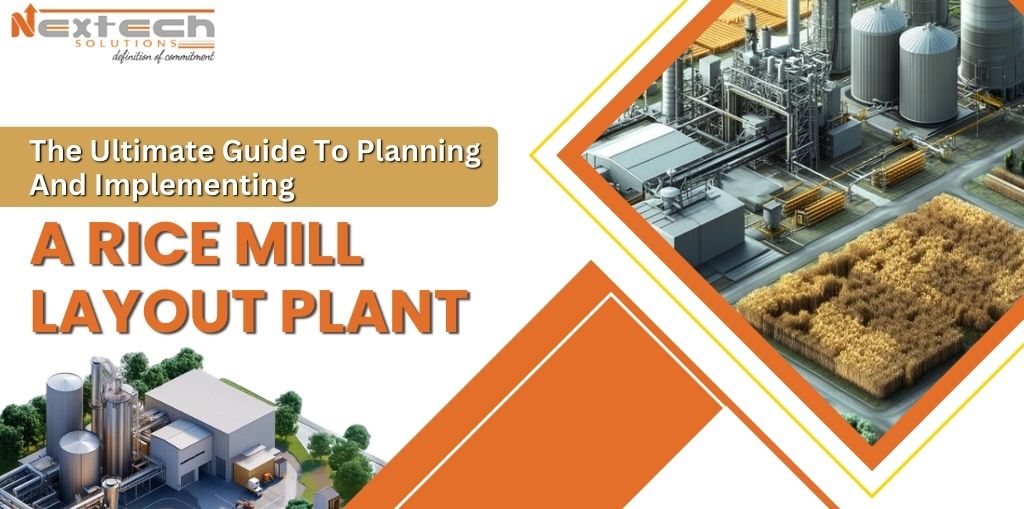Designing a rice mill layout plant is a critical step for ensuring the efficiency, productivity, and overall success of the milling operation. A well-planned layout optimizes space utilization, streamlines workflow, and enhances safety, ultimately leading to better quality rice and higher profitability. This guide will provide you with key insights into planning and implementing an effective rice mill layout.
1. Understanding the Importance of a Good Layout
A thoughtfully designed rice mill layout plant is essential for several reasons:
- Maximized Efficiency: Proper arrangement of machinery and equipment minimizes downtime and ensures a smooth workflow.
- Cost Reduction: An optimized layout reduces the costs associated with material handling, energy consumption, and labor.
- Improved Quality: Efficient plant design maintains the integrity of the rice during processing, leading to a higher-quality final product.
2. Key Considerations in Planning a Rice Mill Layout Plant
When planning a rice mill layout, it is important to consider several critical factors:
A. Selection of the Location
The location of the rice mill plant plays a crucial role in its success. Ideally, the plant should be situated near rice-producing areas to reduce transportation costs for raw materials. Proximity to the market or distribution centers is also essential for minimizing delivery times and costs. Additionally, the site should have good road connectivity, access to a reliable power supply, and adequate water availability.
B. Space Utilization and Layout Design
Effective space utilization is vital to avoid bottlenecks and ensure smooth operation. The layout should prioritize logical flow—from the intake and storage of paddy to cleaning, drying, milling, sorting, and packaging. Using a combination of vertical and horizontal space can help accommodate all machinery efficiently. Ensure there is ample room for the storage of raw and finished products and for employees to move around safely.
C. Selection of Machinery and Equipment
The choice of machinery significantly impacts the overall efficiency and output of the rice mill. Opt for advanced, energy-efficient equipment that aligns with the plant’s production capacity. Ensure the machinery is placed in an order that reflects the sequence of the milling process, reducing the need for manual intervention and material handling.
3. Steps for Implementing a Rice Mill Layout Plant
A. Conduct a Feasibility Study
Before initiating the construction of the rice mill layout plant, conduct a feasibility study to understand the demand and supply dynamics, market potential, and the economic viability of the project. This step helps in setting realistic goals, identifying challenges, and planning for risk mitigation.
B. Develop a Detailed Plant Layout
Once the feasibility study is complete, create a detailed layout plan that includes all the essential elements—such as the position of machines, storage areas, waste disposal zones, and administrative offices. A clear layout helps streamline the construction process and reduces the chances of costly mistakes.
C. Choose the Right Construction Partner
Selecting a reliable construction partner with experience in building rice mill plants is critical for success. A company like Nextech Agri Solutions offers specialized expertise in designing and implementing efficient rice mill layouts. They provide end-to-end solutions, from planning to execution, ensuring that your rice mill operates at optimal capacity.
D. Ensure Compliance with Safety and Environmental Standards
It is crucial to adhere to all safety regulations and environmental guidelines while setting up the rice mill. Install proper ventilation systems, dust control mechanisms, and fire safety equipment. Compliance not only ensures the safety of workers but also enhances the overall sustainability of the plant.
4. Testing and Commissioning
After the plant’s construction, thorough testing of all equipment and systems is necessary to ensure they function correctly. This phase includes checking for proper alignment of machinery, verifying safety protocols, and ensuring that all systems operate within their specified parameters. Successful commissioning marks the beginning of the plant’s operational phase.
5. Training and Operational Readiness
Proper training of staff is vital for the smooth operation of the rice mill. Ensure that all employees understand the workflow, know how to operate the equipment safely, and are aware of emergency protocols. Regular training sessions will help maintain operational efficiency and reduce downtime.
Conclusion
Implementing a well-planned rice mill business and layout plant is essential for maximizing productivity, reducing costs, and achieving high-quality rice production. By considering factors such as location, space utilization, machinery selection, and compliance with safety standards, you can create a facility that operates efficiently and profitably. Companies like Nextech Agri Solutions can provide the expertise needed to design and implement a rice mill layout that meets your specific requirements, ensuring long-term success and sustainability in the rice milling industry.
 MAIL US :
MAIL US :
 CALL US :
>
CALL US :
>
